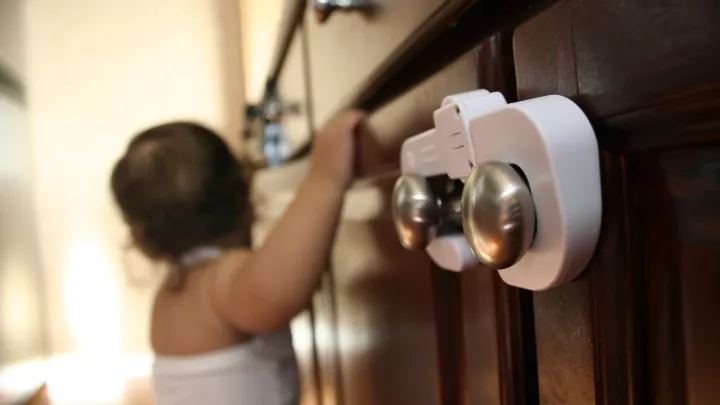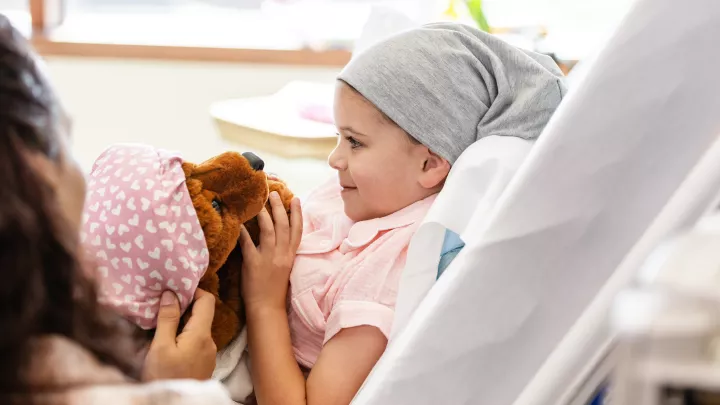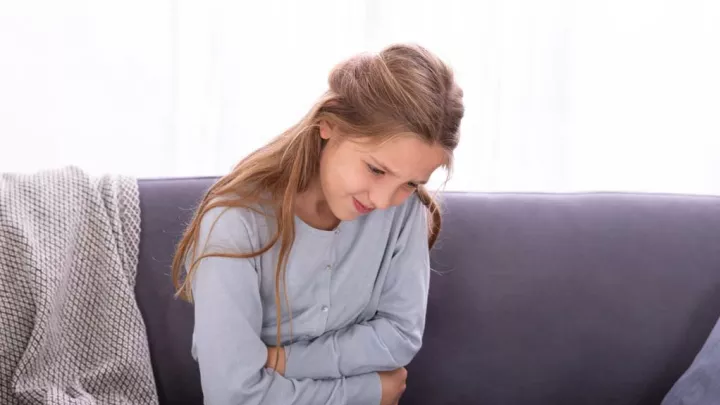
Is Your Purse Hazard-Free?
Many parents and caregivers carry a purse or bag to keep essentials handy, but did you know many of the items inside could be dangerous to your children? Most bags are easy for children to get into and it doesn’t take long for a child to open a container (even those that are “childproof”). As a nurse practitioner at Children’s Hospital Los Angeles, I see many adults with children carrying purses and bags, and it inspired me to cover this topic. At the hospital, our mission is to build healthier futures, and that involves safety around things that are dangerous and poisonous to children. Continue reading for items to watch out for and changes you can make in your own purse.
Note: If your child ingests a poisonous substance, call the American Association of Poison Control Centers at 800-222-1222 immediately.

Dangers in Your Purse
Items in your purse that can be poisonous and hazardous to your child include medication, beauty products and other personal and travel products. While it may be necessary to carry some of these items, if you don’t need a specific item(s), then remove from your purse. If anything is required for your purse, here are some safety tips.
Medications
Over-the-counter and prescription products can cause a variety of problems if your child ingests them. For example, some products, especially prescription medicines for blood pressure, diabetes, epilepsy and psychiatric conditions, can kill a small child after a single dose. All pills and capsules can be choking hazards too. Other potentially dangerous items include:
- Eye drops, which can cause drowsiness or affect your child’s heart and blood pressure
- Nose sprays, which can cause drowsiness or agitation if swallowed
Beauty Products
In all honesty, it’s hard to not carry some beauty products in our bags. What if we need baby power, a small tube of toothpaste or vial of perfume? Unfortunately, these items can be hazardous to children. As you’re looking through your bag, be aware of:
- Hairspray, which can irritate your child’s eyes and face after contact.
- Hand cream, which can cause your child to experience an upset stomach and diarrhea if swallowed in large amounts.
- Mouthwash, which contains alcohol and can intoxicate your child if swallowed in large amounts.
- Nail polish remover, which can irritate your child’s eyes, skin and upset their stomach if swallowed.
- Perfume or cologne, which contains alcohol and can intoxicate your child if swallowed. Perfume and cologne can also irritate eyes and face after contact.
- Sunscreen, which can irritate your child’s eyes and mouth, and cause vomiting if swallowed.
Other Personal and Travel Products
- Baby powder, which can cause eye and throat irritation and can cause serious breathing problems if inhaled.
- Cigarettes, nicotine gum, or patches. These items can cause severe stomach upset and vomiting if swallowed.
- Cigarette lighters, which can irritate your child’s eyes and skin. If your child ignites a cigarette lighter, it can burn their skin and cause severe stomach upset and damage to the intestinal tract if swallowed.
- Hand sanitizer, which contains a high amount of alcohol and can intoxicate if swallowed. Hand sanitizer may irritate your child’s eyes, skin and mouth.
- Insect repellent, which can irritate your child’s eyes and mouth, and even cause seizures if swallowed.
- Pepper spray, which can irritate your child’s eyes and skin and can cause breathing problems.
- Toothpaste, which can cause stomach upset if swallowed.
Choking Hazards
One of the most effective ways to determine if something is a choking hazard is using the toilet paper roll method. If an item fits into a toilet paper roll, it is considered a choking hazard (watch a video below from our Injury Prevention Program).
The following items are choking hazards:
- Batteries—these can cause severe irritation or burns if swallowed, especially “button” batteries used for watches, hearing aids and other small electronics
- Chewing gum
- Coins
- Diaper wipes
- Pens
- Tissues
Combat Purse Germs
When you’re out and about it’s easy to place your purse anywhere—bench, table and on the floor. Purses can collect many germs from being placed on surfaces and floors. Here are some ways to keep your purse as germ free as possible:
- Clean and disinfect the bottom of your purse or bag with a wipe or spray (do this once a month or as often as you can).
- Avoid placing your purse or bag on the floor.
- Avoid placing your purse or bag on tables where food is prepared or eaten.
Keep Your Child Safe
- Keep your purse or bag out of reach of small children. This is especially important to remember when you have family or guests visiting your home.
- Avoid carrying items that can be considered dangerous in your purse or bag if they are not necessary.
- Keep the American Association of Poison Control Centers phone number in your cell phone and on your fridge at home, in case of accidental swallowing of harmful items: 800-222-1222.
Keeping this checklist in mind when you pack your purse or bag is an effective way to prevent your child from being harmed, experiencing sickness or choking. I encourage you to share this blog post with your network of friends and family!
Thank you to Cyrus Rangan, MD, FAAP, ACMT, medical toxicology consultant for Children’s Hospital Los Angeles and the Los Angeles County Department of Public Health, for his advisement on this RN Remedies blog post.


